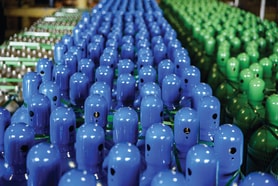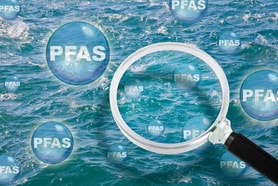Liquid nitrogen deep-freezing in the food industry
Deep-freezing is a preservation method based on lowering the temperature, to levels below -18ºC, so as to inhibit the growth of bacteria. For the majority of foodstuffs, in particular those with a high water content, deep-freezing can even slightly improve quality if the freezing process is conducted rapidly enough.
During cooling the water content harnessed within the cells of food products changes into ice crystals, which tend to gradually increase in size thereby damaging the intra-cellular structure. However, if the temperature is lowered quickly enough, crystallisation can be avoided, creating an amorphous phase, which promotes the stability of the product during the period in which it is subsequently kept.
Deep-freezing with liquid nitrogen is undoubtedly the best method of freezing foods. The growing number of refrigerators dedicated to deep-freezing using nitrogen at a temperature of -196ºC provides instant cooling of the ingredients: liquid nitrogen is, in fact, able to absorb heat far faster and with minimal surface contact because its ability to change its state (liquid-gas) at a low temperature (-196ºC).
For the cryogenic freezing of foodstuffs dedicated equipment is used which takes advantage of the property of nitrogen to absorb energy as it changes from a liquid to a gaseous state and then, again, during the subsequent warming of the gas itself, from the temperature of -196ºC to the point when it exits the tunnel, which is usually at -20ºC.
... to continue reading you must be subscribed









